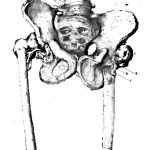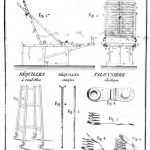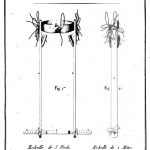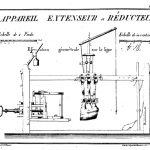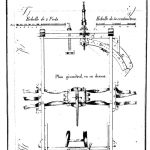Last week I had a series of email conversations with Axelle Mokry (www.senselab.ch), a Swiss physiotherapist who has for some time now been part of an association looking to research the work of French doctor François Humbert, who created the first orthopedic centre of France in 1817.
Unlike many academics of the time, Humbert was the first to consider developmental dysplasia of the hip as a treatable pathology.
Not having received university medical training, his work is almost completely unknown and Axelle’s small association is trying to promote his work and return him to his place in the French Medical History.
Born in 1776, François Humbert received medical training in military hospitals during the French Revolution. Following the Revolution, the law of organization of medicine and pharmacy of 1803 allowed former military surgeons to become civilian doctors. François Humbert, then 27 years old, was received in March 1804 as a health officer into the department of Meuse.
It was here that he opened the first orthopedic centre in France in a small village in the Meuse, Morley, where he received young patients suffering from scoliosis and hip dysplasia.
He created a series of machines to treat these two pathologies, including orthopedic chairs for scoliosis and beds for hip dysplasia, and the reduction principle he put in place – traction, abduction and internal rotation – is still at work in hospitals today.
Several elements are notable in Humbert’s approach, especially the place he gave to patients during their treatment. Indeed, young patients were trained to use their machines, including giving them access to the various levers to regulate the tension. Humbert was also very attentive to the risk of cutaneous lesions as well as the pain felt by the patients. In his files, he expressly noted that the different stages of treatment must follow the evolution of each patient and not be painful.
He established a real continuum of care, with the creation of orthotics for patients to use during walking rehabilitation. He created a walking path in the gardens of the centre, and a path made of stone slabs allowing a “trolley with wheels” to circulate.
The association has now brought together a tremendous amount of data on François Humbert’s work, including:
- anatomical and pathological drawings of hip dysplasia and scoliosis,
- engravings of all orthopedic machines,
- his memoirs in which all treatments and his clinical reasoning are notified,
- and original models of his othopaedic machines.
With the support of the French Ministry of Culture and the Barrois Museum, the association was able to renovate Humbert’s orthopedic models. And working with a joiner/cabinetmaker from Ministry, build an orthopedic scoliosis treatment chair to full size. This allows us to test the processes described by Humbert in his memoirs.
Testing these devices led to an interesting discovery: the orthopedic chair does not seem to work only by passive constraints, but by active constraints, i.e. with proprioceptive reminders involving a much more active re-education, such as self-stretching, than appeared on the engravings.
Axelle works with two orthopedic surgeons, Dr. Dubrana and Dr. Desseaux, and Michel Pionnier, historian of medicine and President of the association. They collaborate with different French universities, Bar-le-Duc Museum, and French Ministry of Culture.
Further reading
Desseaux, A., Guibert, É., Pionnier, M. and Préau Sido, M. (2017). La collection de machines orthopédiques de François Humbert (1776-1850), médecin meusien, fondateur du premier établissement orthopédique français (The collection of orthopaedic machines of François Humbert, doctor in the Meuse department and founder of the first orthopaedics centre in France). In Situ, 31. doi:10.4000/insitu.14064 (pdf).
French Society of the History of Medicine: François Humbert, an unknown orthopedist, initiator of cures for the “lame”: http://www3.biusante.parisdescartes.fr/revue-hsm/index.las
Image sources:
Orthopedic and pathological drawings from:
Humbert F, Jacquier N. Essai et observations sur la manière de réduire les luxations spontanées ou symptomatiques de l’articulation ilio-fémorale; méthode applicable aux luxations congénitales et aux luxations anciennes par cause externe, F. Gigault d’Olincourt. 1835.
Lits orthorachidiques from:
Humbert F, Jacquier N. De l’emploi des moyens mécaniques et gymnastiques dans le traitement des difformités du système osseux, F. Gigault d’Olincourt. 1836.

Posted by Dave Nicholls
Dave Nicholls is a Professor of Critical Physiotherapy in the School of Clinical Sciences at AUT University in Auckland, New Zealand. He is a physiotherapist, lecturer, researcher and writer, with a passion for critical thinking in and around the physical therapies. David is the founder of the Critical Physiotherapy Network, an organisation that promotes the use of cultural studies, education, history, philosophy, sociology, and a range of other disciplines in the study of the profession’s past, present and future. He is also co-founder and chair of the International Physiotherapy History Association Executive, and founding Executive member of the Environmental Physiotherapy Association. David’s own research work focuses on the philosophy, sociology, and critical history of physiotherapy, and considers how physiotherapy might need to adapt to the changing economy of health care in the 21st century. He has published numerous peer-reviewed articles and book chapters, many as first author. His first book – The End of Physiotherapy (Routledge, 2017) – was the first book-length critical history of the profession. A second sole-authored book – Physiotherapy Otherwise – was published in early 2022 as a free pdf/eBook (available from https://ojs.aut.ac.nz/tuwhera-open-monographs/catalog/book/8). He was co-editor on the first collection of critical physiotherapy writings – Manipulating Practices (Cappelen Damm, 2018) – and was the lead editor for the follow-up – Mobilising Knowledge (Routledge, 2020). He is also very active on social media, writing weekly on contemporary critical physiotherapy issues (criticalphysio.substack.com). He has taught in physiotherapy programmes in the UK and New Zealand for over 30 years and has presented his work around the world.



